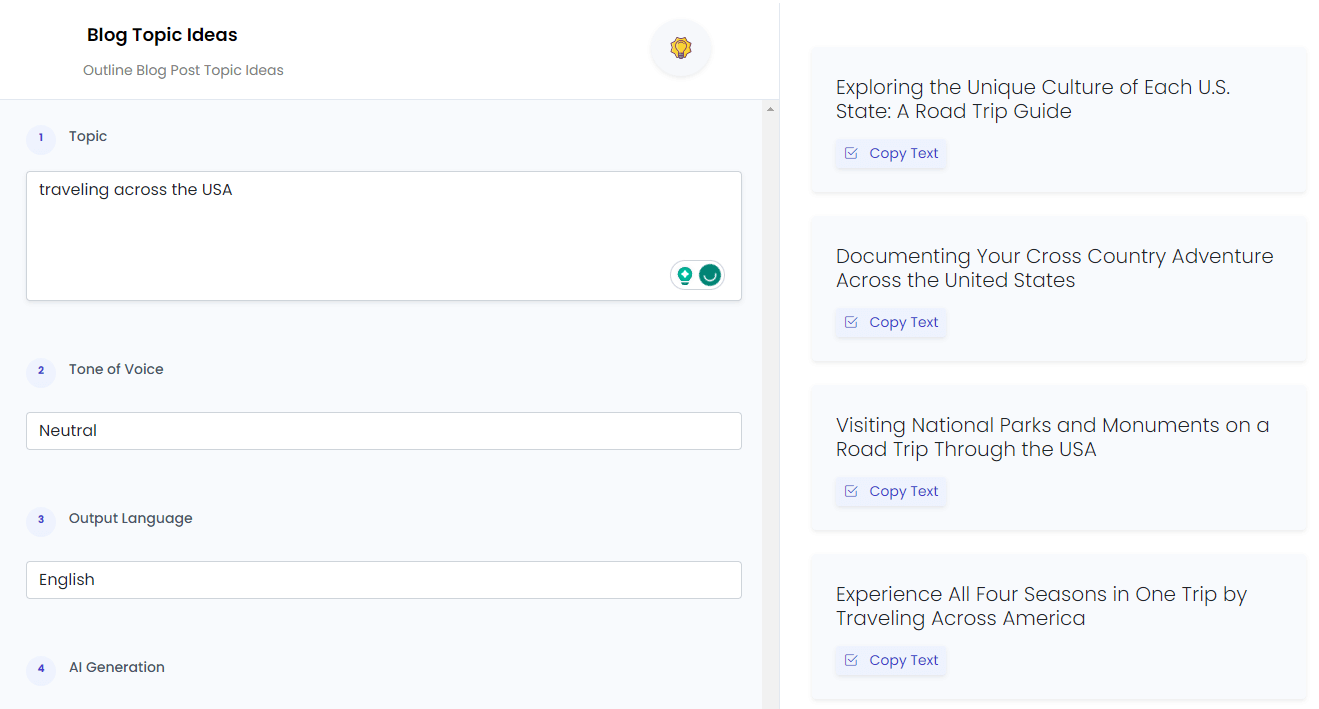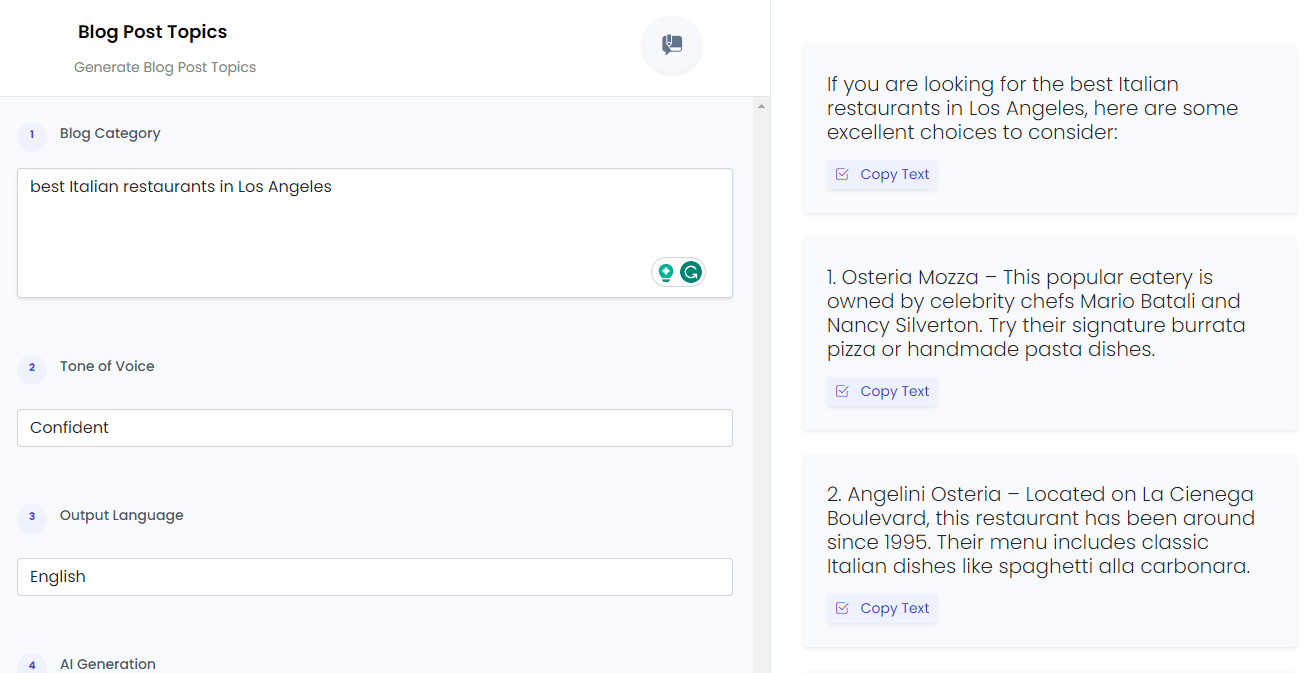Writing unique blog posts with AI can be a great way to keep your readers engaged and build a solid online presence. Here are some tips for creating unique blog posts using AI:
1. Brainstorm Content Ideas - Before you start writing, it's important to brainstorm content ideas that will capture your audience’s attention. Utilize AI to generate potential topics and titles, running experiments with keywords and phrases.
Create a list of ideas for content pieces, either alone or with input from colleagues, or use AI for content recommendations. Prioritize the list according to importance and relevance.


2. Research Relevant Topics - Once you have identified potential topics, do research to create a more in-depth article, exploring related questions and issues.
AI tools can help you find relevant resources quickly and analyze data from multiple sources for insights. Research is essential to further knowledge in any field. It involves gathering data, forming theories, testing hypotheses, and drawing conclusions.
Research topics vary widely depending on the subject matter, but all require a rigorous process of inquiry. Research can be conducted on virtually any topic by practically anyone with the necessary resources.
When selecting a research topic, it is important to consider its scope and relevance to the field. The research should provide advanced knowledge within its domain and be applicable to real-world situations.
During this time, the research should contribute new insights that are meaningful and beneficial to the field it represents.
In order to choose an appropriate research topic, one must consider existing literature in the field and identify gaps in understanding or areas of potential growth. Once these have been located, a hypothesis can be formulated that addresses the question or issue identified in the literature review.
The hypothesis should then be tested either qualitatively or quantitatively using data collected from relevant sources such as surveys, experiments, interviews, or simulations.
After conducting analysis on this data using appropriate techniques such as regression analysis or multivariate analysis, conclusions should be drawn from the results that explain their meaning in terms of theory and offer implications for practice.


3. Use Creative Visuals - Images can make your post more engaging and captivating. You can use AI-driven visual content creation platforms such as Clevopy.ai Image and Art Generator, Adobe Spark, or Visme to personalize graphics according to the topic of your post.

4. Generate New Content Ideas - AI algorithms can help explore the world of possibilities to create fresh, innovative ideas that will draw readers in.
For instance, ClevopyAI is a text generator that uses natural language processing (NLP) technology to understand context and generate new sentences.
Generating new content ideas can be a challenging process. It is important to brainstorm different strategies and techniques in order to come up with unique and engaging content.
Reading industry publications can also give you insight into what is currently popular with your target audience.
Once you have identified a few interesting topics, consider ways that you can add your own spin on them and create something unique.
You can also generate new ideas utilizing past successful pieces of content and create variations on the theme.
Consider how you can take an existing concept further, or research who has written about similar topics before, and how you could expand on this knowledge.
Finally, don’t forget creativity! If all else fails, draw inspiration from everyday life; explore art galleries or take a walk in nature: often these activities spark innovative ideas. Brainstorming sessions with colleagues or people outside of the organization may also help generate fresh perspectives.

- Write catchy Blog Post Titles
Bloggers and Content Writers can generate Blog Ideas, Blog Intros, How-to Blogs, Meta Descriptions, Listicles, and Long-form Content.
- Write Blog Articles in Minutes
5. Incorporate feedback - To ensure quality, incorporate input from different sources into your final draft of the article.
You may leverage natural language processing (NLP) technologies for automated grading, sentiment analysis, keyword extraction, summarization, and other content creation tools that can help improve your work.
Integrating feedback from different sources is an essential part of producing high-quality work. In order to ensure quality, feedback should be incorporated into the final draft of the article in a meaningful way.
It is important to receive input from a range of perspectives, and this can be done by seeking out comments from colleagues, peers, and other experts related to the subject matter.
When incorporating feedback into the article draft, it is crucial to maintain a neutral tone. Any alterations or adjustments should be made judiciously in order to preserve the original meaning and intent of the article.
Engaging with feedback constructively ensures that errors or potential areas for improvement are identified without compromising any editorial decisions already made.
With careful consideration and attention to detail during the editing process, incorporating feedback effectively results in a more comprehensive and polished version of the article that meets publication standards. This helps create a higher-quality final product with a much greater impact.
Conclusion
Using AI to assist in the writing process, you can create unique and interesting blog posts that will capture the reader's attention.
AI technology helps to make the writing process more efficient and effective, allowing writers to focus on crafting compelling blog posts with few edits from humans. Leveraging AI's powerful capabilities, you can increase your blog post reach and engagement levels while staying 10x productive.



